What does a seven-year-old do when her entire first-grade class is going on an exciting field trip to the Portland Science Center and she has to stay home? If her name is Sophia Houle, she sends her trusty robot instead. To see The Robot Zoo.
Can you find Sophia’s robot in the group photo? Hint: It doesn’t have arms and legs.
There it they are. Sophia and her robot Snowball. That’s what she named it when they first met last fall. It doesn’t look like any robot I imagined. It is 100 percent remote controlled. By Sophia with an iPad. “She can move it up and down,” says her mother Angela,”spin it pretty much on a dime and move it back and forth. She can park it. She can look down at her feet to see where’s she going and see things around her. She can take photos with it and make the iPad go up and down.”
She can even do a little space exploration with it. (The other exhibit at the Science Center is Space: A Journey to Our Future.)
So … why does Sophia need a robot? And how did she get one?
Well, except for a weekly dance class and some sports, she’s pretty much housebound and has been since she started first grade. She was born with a liver condition called biliary atresia and had a liver transplant when she was 10 months old. She had a bit of rejection at two and a half but had been doing well with her new liver ever since.
This past fall she began showing signs of moderate rejection and had to start taking a higher dose of immunosuppressants. She was able to start school with the other kids but kept coming down with every bug that drifted her way and had a hard time shaking them. “It required a lot of antibiotics,” says Angela, “and with a kiddo like this, when they require a lot of antibiotics, it makes them resistant to some of the bigger antibiotics. Sometimes they get a bigger infection so it wasn’t the best option to keep her in that environment right now.”
At first, her parents thought about homeschooling, but it’s a busy family. Sophia has three siblings — one’s in school but the other two (four months and two years) are still at home. Homeschooling would have been a big challenge. They were also worried about her being isolated and away from her friends.
That’s where Snowball rolls in. The guidance counselor at Sophia’s school — Carl J. Lamb in Springvale — told Angela about a Maine-based non-profit organization called Grahamtastic Connections. It provides free laptops with webcams for sick kids.
Leslie Morisette founded the organization in honor of her son Graham, who died of leukemia in 1997. He was 8 and one-half. When Graham was in the hospital, Leslie was surprised and dismayed not to have access to a computer or the Internet. “I sort of wandered the halls and made a mental note of this,” she says. “When Graham passed away, I knew that my life had suddenly changed and I could never leave the world of kids in the hospital. It was a world I never knew existed. I loved the children I met and the families.”
She decided that she would bring computers and Internet access to those children and families. She started with one. “It was for a little girl in Scarborough who is now, I’m happy to report, in remission and in nursing school.”
Over the past 18 years, Leslie has gone from one ginormous computer and dial-up Internet to several laptops and iPads and high-speed connections. In 2012, thanks to Prime Motor Group, she got her first robot.
Snowball is number eight, a gift from Town Square Reality in Sanford. Every single robot is in use in Maine and just over the border in New Hampshire. They are allowing children like Sophia to continue going to school and staying connected to the outside world. Grahamtastic relies on the generosity of individuals and businesses to buy all of its equipment. Just this week, Moody’s Collision Center in Gorham is buying a ninth robot. They cost about $3500.
“I believe we’re the only nonprofit in the country that has robots to lend to sick children,” says Leslie. “So I think we’re pioneering this technology.”
Here I am at the Science Center interviewing Sophia, who is at home with her mother. As usual, she used her iPad to control her robot’s movements. It’s how she moved Snowball (and herself) throughout the Science Center. It’s also how she gets around the classroom.
The woman in the above picture is Kim Caron, who is describing one of the robots at the exhibit to Sophia. She’s a retired teacher who happened to be Graham’s third-grade teacher. She’s now on the Grahamtastic board and also volunteers her time to tutor Sophia two days a week. She says Sophia maneuvers the robot flawlessly.
Now remember, the robot is in the classroom (or the Science Center) and Sophia is calling the shots from home. “She goes up to the board and looks at the lesson,” says Kim. “She moves around from group to group. Her teacher Maria is really good. It’s not an easy thing for a teacher to have a robot in class. I need to say that. There’s a lot to it, and Maria has put in a ton of time to make it work.”
The robotic fly was also pretty cool. In this picture, Caroline Broderick, from the Science Center, explains to Sophia how it works. She said she loved watching all the kids interact. “Her classmates would say, ‘Oh Sophia, look at this’ and wave her over,” she says. “She would just wheel right over and she didn’t miss a beat. Even though she’s miles away the robot transports her right in. It’s special that the Portland Science Center could be a part of that. It was pretty magical to watch.”
And being able to participate in anything at all is pretty magical to Sophia. “It’s like I can be at school and I can move around a lot,” she explains. “And on a field trip, there’s a lot of stuff. Then I’m like whoa. I’ve never seen this before and I’m like WHOA!”
I have to say it. She is one wicked cute little girl!
Want to learn more about Grahamtastic? Here’s the link.
Want to learn more about the Portland Science Center? Here’s that link.
I highly recommend them both.

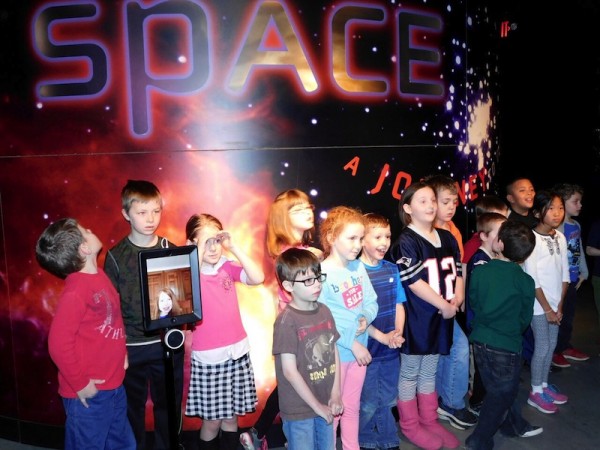
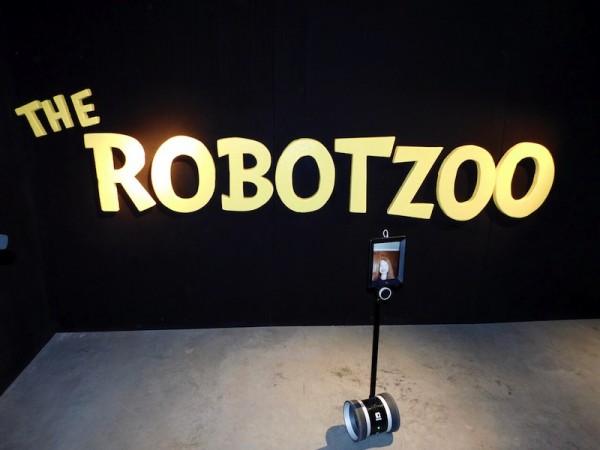
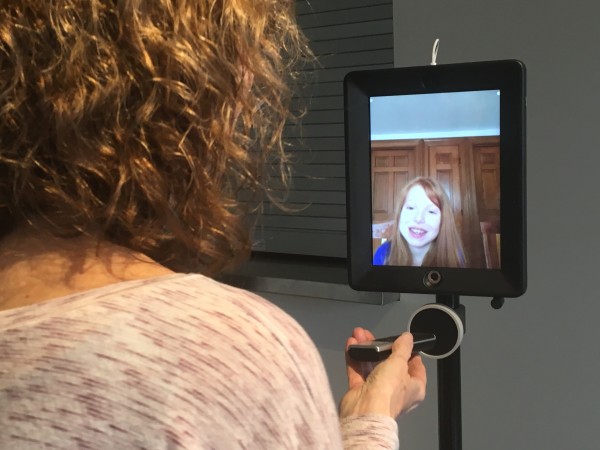
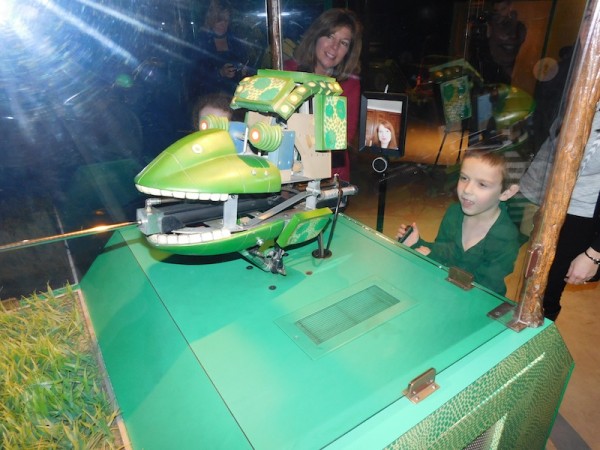
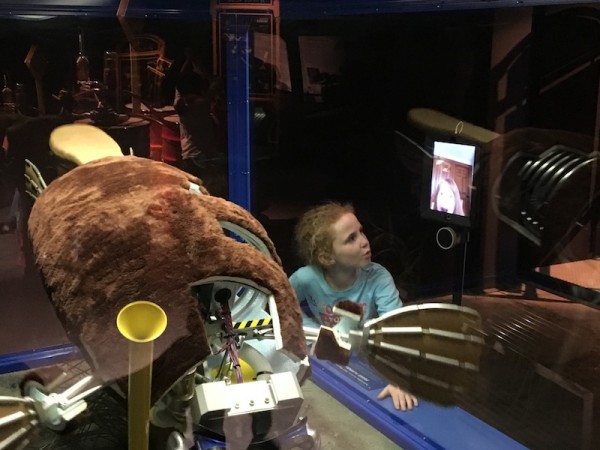
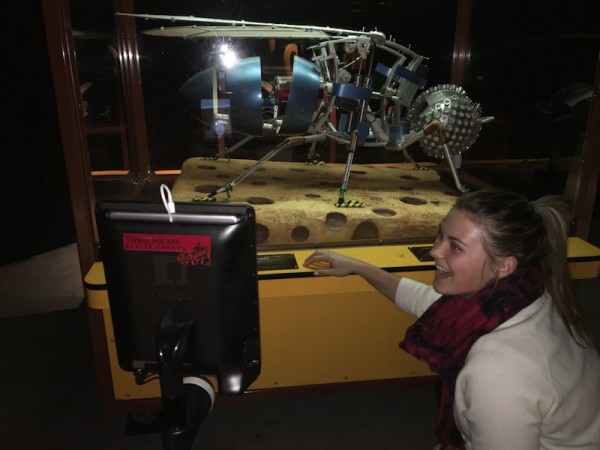
Amazing!
Sherry Turkle down at MIT would be fascinated with this, if she doesn’t already know about it.
Do you know her? Would you send her the link?